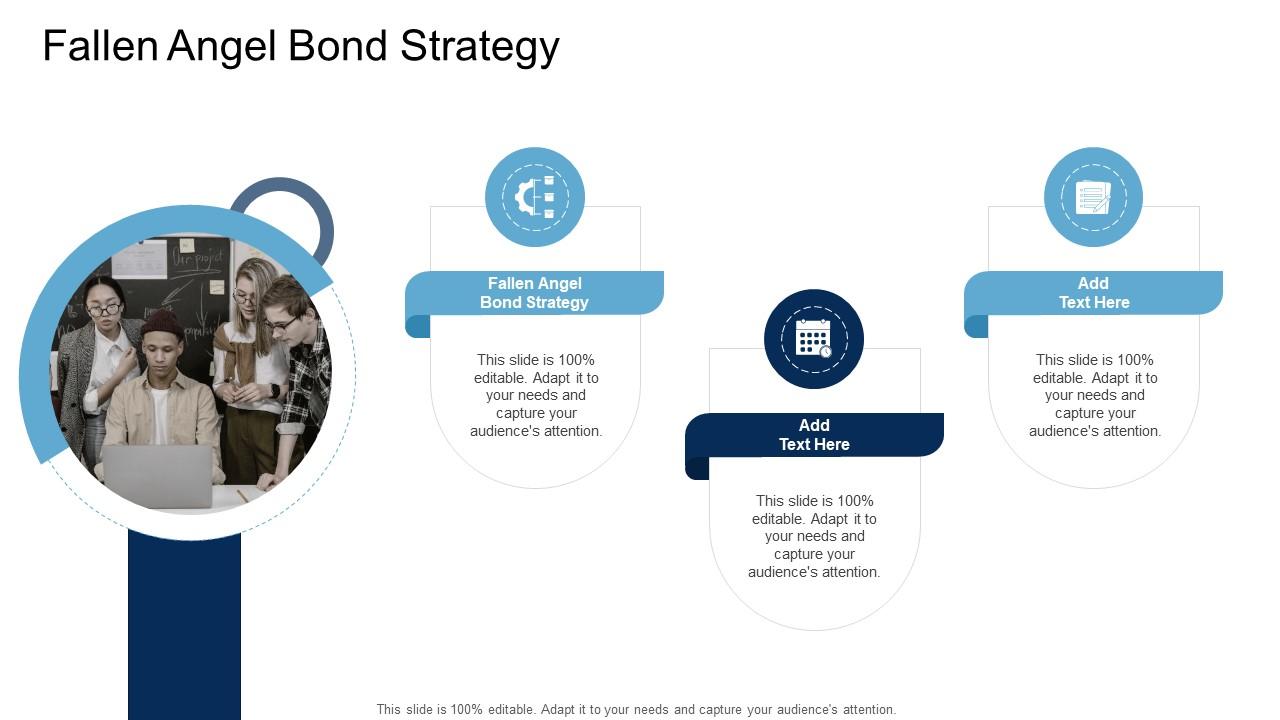

Finance
What Are Fallen Angel Bonds
Published: October 11, 2023
Learn about fallen angel bonds and their role in finance. Discover how these bonds can be a strategic investment opportunity.
(Many of the links in this article redirect to a specific reviewed product. Your purchase of these products through affiliate links helps to generate commission for LiveWell, at no extra cost. Learn more)
Table of Contents
- Introduction
- Definition of Fallen Angel Bonds
- Characteristics of Fallen Angel Bonds
- Causes of Bonds Being Downgraded to Fallen Angel Status
- Risks and Rewards of Investing in Fallen Angel Bonds
- Examples of Fallen Angel Bonds
- How to Assess the Creditworthiness of Fallen Angel Bonds
- Strategies for Investing in Fallen Angel Bonds
- Conclusion
Introduction
Fallen angel bonds are a unique category of fixed-income securities that carry both risks and rewards. These bonds were once considered investment-grade, but have been downgraded by credit rating agencies due to deteriorating financial conditions of the issuing companies. As a result, they now fall into the high-yield or speculative grade category.
Investing in fallen angel bonds requires careful analysis and understanding of the underlying risks. However, for savvy investors with an appetite for higher yields and the willingness to accept the associated risks, fallen angel bonds can present attractive investment opportunities.
In this article, we will delve into the characteristics of fallen angel bonds, the causes behind their downgrade, the risks and rewards associated with investing in them, and strategies for assessing their creditworthiness. By the end, you will have a clearer understanding of fallen angel bonds and be better equipped to make informed investment decisions in this unique asset class.
So, let’s jump in and explore the world of fallen angel bonds, and how they can potentially fit into your investment portfolio.
Definition of Fallen Angel Bonds
Fallen angel bonds are corporate bonds that were once considered investment-grade but have been downgraded to speculative or high-yield status by credit rating agencies. These bonds were initially issued by companies with relatively strong creditworthiness and a higher likelihood of repaying their debts based on their financial stability and market position.
However, due to various factors such as economic downturns, industry-specific challenges, or mismanagement, the financial condition of these companies deteriorates. This results in a decline in their creditworthiness, leading credit rating agencies to lower their ratings. Once the bond’s rating falls below investment-grade, it is considered a fallen angel bond.
When a bond is downgraded to fallen angel status, it signifies increased credit risk associated with the issuer. As a result, these bonds typically offer higher yields to compensate investors for the elevated level of risk they are taking. Fallen angel bonds often have characteristics of both investment-grade and high-yield bonds, making them an intriguing investment opportunity for those seeking a balance between risk and potential return.
It is important to note that fallen angel bonds are distinct from other high-yield bonds issued by companies that were already considered below investment-grade. Fallen angel bonds were initially investment-grade before their downgrade, while other high-yield bonds have always been classified as non-investment-grade.
Overall, fallen angel bonds occupy a unique space in the fixed-income market, sitting at the crossroads of investment grade and high-yield bonds. As such, they offer a different risk-reward profile compared to other bond categories and may be of interest to investors seeking diversified fixed-income portfolios.
Characteristics of Fallen Angel Bonds
Fallen angel bonds possess several key characteristics that set them apart from other types of bonds. Understanding these characteristics is essential for investors considering adding fallen angel bonds to their portfolios:
- Downgraded Credit Rating: The primary characteristic of fallen angel bonds is that they have experienced a credit rating downgrade from investment-grade to speculative or high-yield status. This downgrade reflects a deterioration in the financial health of the issuing company and an increased risk of default.
- Higher Yields: Due to their increased credit risk, fallen angel bonds tend to offer higher yields compared to bonds with investment-grade ratings. These higher yields attract investors seeking potentially higher returns on their fixed-income investments.
- Lower Bond Prices: When a bond is downgraded to fallen angel status, its price in the secondary market often declines. This is because the downgrade erodes investor confidence, leading to increased selling pressure and downward price pressure.
- Intrinsic Value: Despite the credit rating downgrade, fallen angel bonds may still have underlying intrinsic value. The downgrade may have been driven by temporary issues or market conditions rather than fundamental problems with the issuing company. As a result, investors can potentially capture value by purchasing fallen angel bonds at discounted prices.
- Value Recovery Potential: Fallen angel bonds also offer the potential for value recovery if the issuer can improve its financial position and regain investment-grade status. As financial conditions improve, the bond’s price may rise, providing capital appreciation along with interest income.
- Industry-Specific: Fallen angel bonds are often concentrated in specific industries that face challenges or cyclical downturns. This concentration increases the importance of conducting industry analysis along with individual company analysis when evaluating fallen angel bonds.
- Increased Volatility: The risk profile of fallen angel bonds is higher compared to investment-grade bonds. The combination of lower credit quality, potential price volatility, and market uncertainties can result in increased bond price fluctuation.
Overall, fallen angel bonds exhibit a unique set of characteristics that make them an intriguing investment option. While they come with increased risks, including default risk and price volatility, the potential for higher yields and value recovery can make them an attractive addition to a diversified fixed-income portfolio.
Causes of Bonds Being Downgraded to Fallen Angel Status
The downgrade of bonds to fallen angel status is driven by various factors that impact the credit quality and financial stability of the issuing companies. Understanding these causes is crucial in evaluating the risks associated with investing in fallen angel bonds:
- Economic Downturn: Economic recessions or downturns can severely impact the financial performance of companies across industries. A general decline in economic conditions can lead to a decrease in the revenue and profitability of the issuing company, prompting credit rating agencies to lower their ratings.
- Industry-Specific Challenges: Some industries face unique challenges that can impact the financial health of companies within them. Examples include regulatory changes, technological disruptions, or shifts in consumer preferences. A decline in industry fundamentals can lead to a downgrade of bonds within that industry.
- Debt Burden: Excessive debt levels can strain the financial position of a company, making it more susceptible to downgrade. If the company is unable to generate sufficient cash flow to service its debts or refinance them at favorable terms, credit rating agencies may lower their ratings.
- Management Issues: Poor management decisions or governance practices can weaken a company’s financial position and create operational inefficiencies. Such mismanagement can erode investor confidence and prompt credit rating agencies to downgrade the company’s bonds.
- Acquisitions or Restructuring: Companies involved in mergers, acquisitions, or major restructuring activities face increased financial risks during these transitional periods. The uncertainty and integration challenges associated with these activities can result in a credit rating downgrade.
- Market Conditions: External factors, such as changes in interest rates, foreign exchange rates, or commodity prices, can impact a company’s financial performance and creditworthiness. Volatile markets or adverse changes in market conditions can contribute to a downgrade of the company’s bonds.
It is important to note that the causes of a downgrade can vary for each individual company and industry. Investors evaluating fallen angel bonds should conduct thorough due diligence to assess the specific factors contributing to the downgrade and evaluate the issuer’s potential for recovery.
By understanding the causes behind bond downgrades, investors can gain insights into the potential risks associated with fallen angel bonds and make more informed investment decisions.
Risks and Rewards of Investing in Fallen Angel Bonds
Investing in fallen angel bonds can offer both risks and rewards for investors. It is crucial to carefully consider these factors before making investment decisions:
Risks:
- Default Risk: Fallen angel bonds carry a higher risk of default compared to investment-grade bonds. The downgrade in credit rating indicates a higher probability that the issuer may not be able to meet its debt obligations.
- Price Volatility: Fallen angel bonds tend to exhibit higher price volatility compared to investment-grade bonds. Market fluctuations, changes in the issuer’s financial condition, or shifts in investor sentiment can lead to significant price swings.
- Liquidity Risk: Fallen angel bonds may have lower trading volumes and liquidity, making it more challenging to buy or sell them at desired prices. Illiquidity could result in wider bid-ask spreads or limited opportunities for exiting positions during market downturns.
- Market and Interest Rate Risk: Like other fixed-income securities, fallen angel bonds are sensitive to changes in market conditions and interest rates. Rising interest rates can lead to price declines, while falling rates can lead to prepayments or a lack of reinvestment opportunities.
- Industry-Specific Risks: Concentration of fallen angel bonds in specific industries exposes investors to industry-specific risks. For example, regulatory changes, technological advancements, or cyclical downturns in the industry can impact the creditworthiness of the issuer.
Rewards:
- Higher Yields: Fallen angel bonds offer higher coupon rates and yields compared to investment-grade bonds. These higher yields are intended to compensate investors for the increased credit risk they are assuming.
- Potential for Capital Appreciation: If the issuer’s financial condition improves, fallen angel bonds have the potential for capital appreciation. As the company’s creditworthiness improves, the bond’s market value may increase and provide investors with capital gains in addition to interest income.
- Diversification: Adding fallen angel bonds to a fixed-income portfolio can enhance diversification. The unique risk-return profile of fallen angel bonds, which falls between investment-grade and high-yield bonds, can provide a distinct source of returns.
- Value Opportunities: Fallen angel bonds may present opportunities to purchase bonds at discounted prices due to the downgrade. If the downgrade was driven by temporary issues or market conditions, investors can potentially capture value as the issuer’s financial situation improves.
It is important to note that the rewards of investing in fallen angel bonds come with increased risks. Investors must carefully evaluate the creditworthiness of issuers, conduct thorough due diligence, and consider their risk tolerance and investment objectives before including fallen angel bonds in their portfolios.
By balancing the potential rewards with the associated risks, investors can make informed decisions regarding the allocation of fallen angel bonds in their investment portfolios.
Examples of Fallen Angel Bonds
Several well-known companies have experienced credit rating downgrades, resulting in their bonds being classified as fallen angel bonds. Here are a few examples:
- Ford Motor Company: In 2005, Ford Motor Company’s bonds were downgraded to junk status due to the challenges faced by the company in the automobile industry. The downgrade was prompted by a decline in Ford’s market share and profitability. However, Ford successfully implemented restructuring efforts and regained investment-grade status in 2012.
- General Electric: General Electric (GE) is another notable example of a fallen angel bond issuer. GE’s bonds suffered a downgrade in 2018 due to concerns surrounding its financial liabilities and overall performance. The company’s exposure to various industries and its high levels of debt contributed to the downgrade.
- Deutsche Telekom: Deutsche Telekom, a telecommunications giant, experienced a downgrade of its bonds during the dot-com bubble in the early 2000s. The company faced challenges related to declining revenues and profitability. However, Deutsche Telekom implemented cost-cutting measures and strategic changes, ultimately leading to an upgrade of its bonds in subsequent years.
- McDonald’s: McDonald’s, a renowned fast-food chain, faced a credit rating downgrade during the global financial crisis in 2008. The downgrade was driven by concerns about the company’s ability to sustain its sales growth and navigate a challenging economic environment. However, McDonald’s responded by introducing new menu items and improving operational efficiency, eventually regaining its investment-grade rating.
These examples demonstrate the dynamic nature of fallen angel bonds and the potential for issuers to recover their creditworthiness. While these companies faced significant challenges at the time of the downgrades, they implemented strategic changes to strengthen their financial positions and regain investor confidence.
It is important for investors to research and analyze the specific circumstances and outlook of each fallen angel bond issuer. This analysis can help assess the potential for value recovery and gauge the risks associated with investing in these bonds.
Keep in mind that this is just a sample of fallen angel bond issuers and is not an exhaustive list. The fallen angel bond universe is diverse, encompassing various sectors and industries. Investors should conduct thorough research and consult with professionals to identify suitable investment opportunities.
How to Assess the Creditworthiness of Fallen Angel Bonds
Assessing the creditworthiness of fallen angel bonds is crucial for investors to make informed decisions and manage the associated risks. Here are key factors to consider when evaluating the creditworthiness of fallen angel bonds:
- Financial Analysis: Conduct a thorough analysis of the issuer’s financial statements, including their revenue, profitability, and cash flow. Assess the company’s ability to meet its debt obligations and evaluate trends in key financial metrics over time.
- Debt Profile: Evaluate the issuer’s debt profile, including the total amount of debt, maturity schedule, and interest coverage ratio. Assess the issuer’s ability to generate sufficient cash flow to service its debt and the company’s refinancing risk.
- Industry Analysis: Examine the condition of the industry in which the issuer operates. Consider industry-specific factors such as competition, regulatory environment, and market trends. Assess the issuer’s position within the industry and its ability to navigate challenges and capitalize on opportunities.
- Management Track Record: Evaluate the track record and experience of the issuer’s management team. Consider their ability to execute strategic initiatives, manage risk effectively, and adapt to changing market conditions. Assess their past performance in addressing challenges and improving the company’s financial position.
- External Factors: Consider macroeconomic factors, geopolitical events, and market conditions that may impact the issuer’s creditworthiness. Evaluate how the issuer is positioned to handle external risks such as changes in interest rates, currency fluctuations, or regulatory changes.
- Credit Ratings: Review credit ratings assigned by reputable rating agencies. While credit ratings alone should not be the sole basis for decision-making, they provide a valuable perspective on the issuer’s credit quality based on independent analysis.
- Management Communication: Assess the transparency and effectiveness of the issuer’s communication with investors. Regular updates, disclosures, and management commentary on financial performance and outlook can provide insights into the issuer’s operations and future prospects.
It is important to consider these factors holistically and not solely rely on isolated metrics or indicators. The creditworthiness of fallen angel bonds can differ significantly across issuers, so customized analysis is essential.
Investors may also consider seeking guidance from financial professionals, such as credit analysts or portfolio managers, who specialize in analyzing fixed-income securities. Their expertise and experience can provide valuable insights and assist in the evaluation of fallen angel bond investments.
By conducting thorough credit analysis and considering the broader market and industry factors, investors can make more informed decisions regarding the creditworthiness of fallen angel bonds and construct a well-diversified portfolio.
Strategies for Investing in Fallen Angel Bonds
Investing in fallen angel bonds requires careful consideration and a well-defined approach to manage the associated risks. Here are some strategies to consider when investing in fallen angel bonds:
- Diversification: Spread your investment across multiple fallen angel bonds to reduce the concentration risk of any single issuer or industry. Diversification can help mitigate the impact of potential defaults and price volatilities.
- Research and Analysis: Conduct thorough research and analysis on the individual issuers, including their financial health, industry dynamics, and management track record. Evaluate the potential for value recovery and assess the issuer’s ability to regain investment-grade status.
- Selectivity: Be selective in choosing fallen angel bonds based on their creditworthiness, yield potential, and risk-reward profile. Focus on issuers with solid fundamentals and a clear path to recovery.
- Active Management: Consider an actively managed approach to investing in fallen angel bonds. Skilled portfolio managers can take advantage of market inefficiencies, actively monitor credit conditions, and make timely investment decisions.
- Monitoring and Risk Management: Continuously monitor the creditworthiness of fallen angel bond issuers and be prepared to react to any significant changes. Set appropriate risk management strategies, including setting stop-loss limits and regularly reviewing the portfolio’s performance.
- Consider Professional Advice: Seek guidance from financial professionals, such as portfolio managers or advisors specializing in fixed-income investments. Their expertise can help you navigate the complexities of fallen angel bonds and identify suitable investment opportunities.
- Take a Long-Term View: Investing in fallen angel bonds often requires patience and a long-term perspective. Some issuers may take time to recover, and market conditions can be volatile in the short term. A disciplined approach and a focus on long-term potential can help navigate uncertainties.
It is essential to align your investment strategy with your risk tolerance and investment objectives. Fallen angel bonds can offer attractive yields and potential value recovery, but they come with increased credit and market risks. Consider your risk appetite and the role of fallen angel bonds within your overall investment portfolio.
Remember to stay well-informed about market trends, economic conditions, and industry developments to make informed investment decisions. Regularly review and reassess your portfolio to ensure it aligns with your investment goals and risk tolerance.
By employing these strategies and utilizing professional guidance, investors can explore the potential opportunities offered by fallen angel bonds while effectively managing the associated risks.
Conclusion
Fallen angel bonds can present unique investment opportunities for those seeking to balance risk and reward within their fixed-income portfolios. These bonds, once considered investment-grade but downgraded to speculative or high-yield status, offer higher yields to compensate for the increased credit risk they carry.
Understanding the characteristics, causes of downgrades, and the risks and rewards of investing in fallen angel bonds is crucial for investors. By carefully assessing the creditworthiness of issuers, conducting thorough research and analysis, and diversifying their investments, investors can better navigate the fallen angel bond market.
While fallen angel bonds come with risks such as default risk, price volatility, and industry-specific challenges, they also offer potential rewards such as higher yields, capital appreciation, and portfolio diversification. By formulating a well-defined investment strategy, monitoring the creditworthiness of issuers, and seeking professional advice when needed, investors can effectively navigate the fallen angel bond market.
It is important to note that investing in fallen angel bonds requires a long-term perspective and an understanding of the unique dynamics within the fixed-income market. Regularly reassessing the portfolio and staying informed about market developments are essential elements of successful investing in fallen angel bonds.
In conclusion, fallen angel bonds can play a valuable role within a diversified fixed-income portfolio, providing opportunities for yield enhancement and potential value recovery. However, investors must carefully assess the creditworthiness of issuers, monitor market conditions, and employ robust risk management strategies to achieve their investment objectives.














